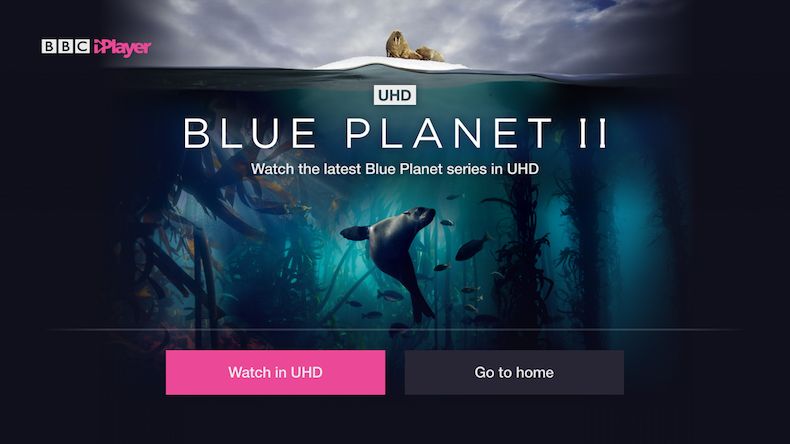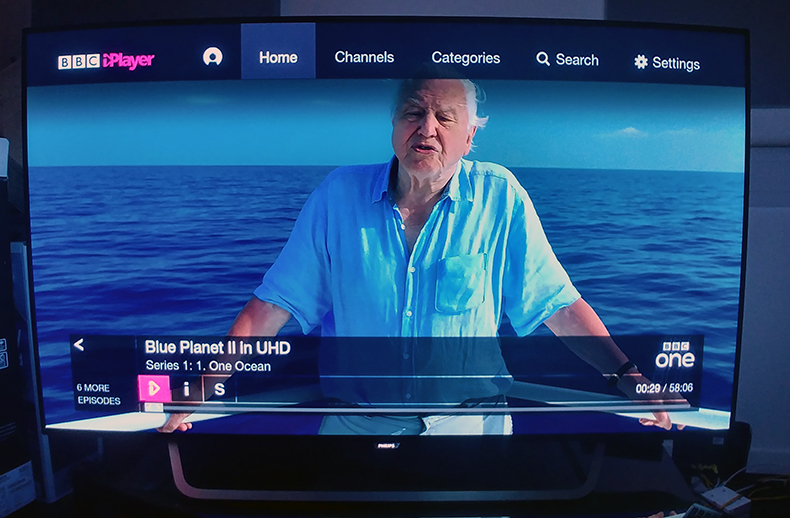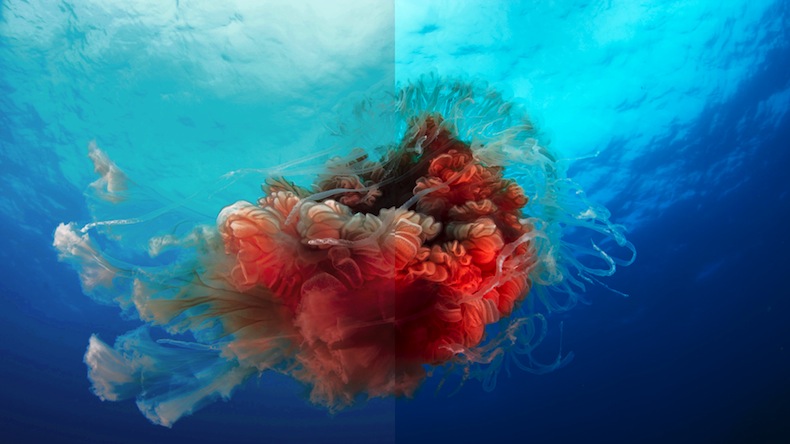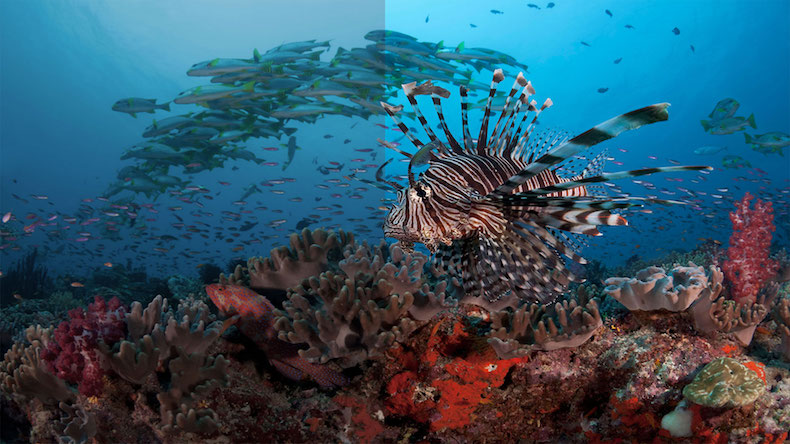First look: Blue Planet II in 4K and HDR on iPlayer
The beautiful, briny sea looks just as briny but even more beautiful...

It’s been less than 24 hours since Blue Planet II arrived on BBC iPlayer in 4K and HDR, and we’ve chosen to spend them wisely. Indeed, the series has brought a different meaning to our Monday blues today, as the What Hi-Fi? review team huddled around a Philips 55POS9002 OLED – recently installed as one of our favourite 55in Tvs – to witness the latest BBC UHD trial in all its 4K HDR glory.
MORE: 6 things you should know about BBC 4K broadcasts

As anyone fortunate enough to have seen the benefit of the two technologies first-hand (and perhaps even witnessed the Beeb’s first Ultra HD iPlayer trial) won’t be surprised to hear, this is the best way to watch the series.
The familiar opener of the Earth against the black backdrop plays into the hands of the Philips OLED panel, and from then on the synergy between the higher resolution and extended dynamic range keeps us wide-eyed.
We dive into those extra pixels and colours with the ‘Coral Reef’ episode, and the combination of the corals’ vibrancy and array of textures is at another level when compared to the HD presentation (which is also currently available to watch on iPlayer).

If you can be disciplined enough to take in just one segment of the screen, you’ll notice even deep-focus areas of the image are generously filled with detail. It takes a moment to absorb the amount of detail on one cuttlefish - even small dust-like particles that are kicked up by a particular speedy octopus are easily detectable.
But, as we’ve found on many an occasion, HDR proves to be the real magic bullet. Close-ups of the coral colonies of polyps fill the screen with intense (but believable) colour, and even small lightning-blue specs on a Grouper leap from its grey scales. HDR’s job isn’t always to dazzle, either - paler colours of dead coral have greater variation, too.
Get the What Hi-Fi? Newsletter
The latest hi-fi, home cinema and tech news, reviews, buying advice and deals, direct to your inbox.
The HDR accentuates the shimmering reflections off the sea's surface, as well as that reflecting off the sea turtles’ shells, at different intensities.
And as the team dive to unchartered depths in ‘The Deep’, the light sources glowing through the pitch-black void look spectacular.
MORE: How to watch 4K video online and on TV

By comparison, the reflections off swordfish are underplayed through the HD SDR version, as are the glowing lantern fish that dart around a shoal of squids.
Above water during the ‘Coasts’ episode, the brighter, daylight scenes show off the same level of explicitness that makes a difference to your viewing. Giant crashing waves no longer look like a mass of white cloud.
This is without a doubt the best way to watch Blue Planet II… at the moment, anyway.
Having watched Planet Earth II on Ultra HD Blu-ray to the extent our discs could do with a thorough wipe, we can expect the physical transfer of Blue Planet II on 4K UHD disc (out next month) to deliver a slightly more depth-perceptive, crisply edged picture.
But until then, owners of compatible TVs (we're crossing our fingers for you) have 29 days left to watch this wonderful and worthwhile trial on iPlayer for free. Probably more than once, too.
Becky is the managing editor of What Hi-Fi? and, since her recent move to Melbourne, also the editor of the brand's sister magazines Down Under – Australian Hi-Fi and Audio Esoterica. During her 11+ years in the hi-fi industry, she has reviewed all manner of audio gear, from budget amplifiers to high-end speakers, and particularly specialises in headphones and head-fi devices. In her spare time, Becky can often be found running, watching Liverpool FC and horror movies, and hunting for gluten-free cake.

